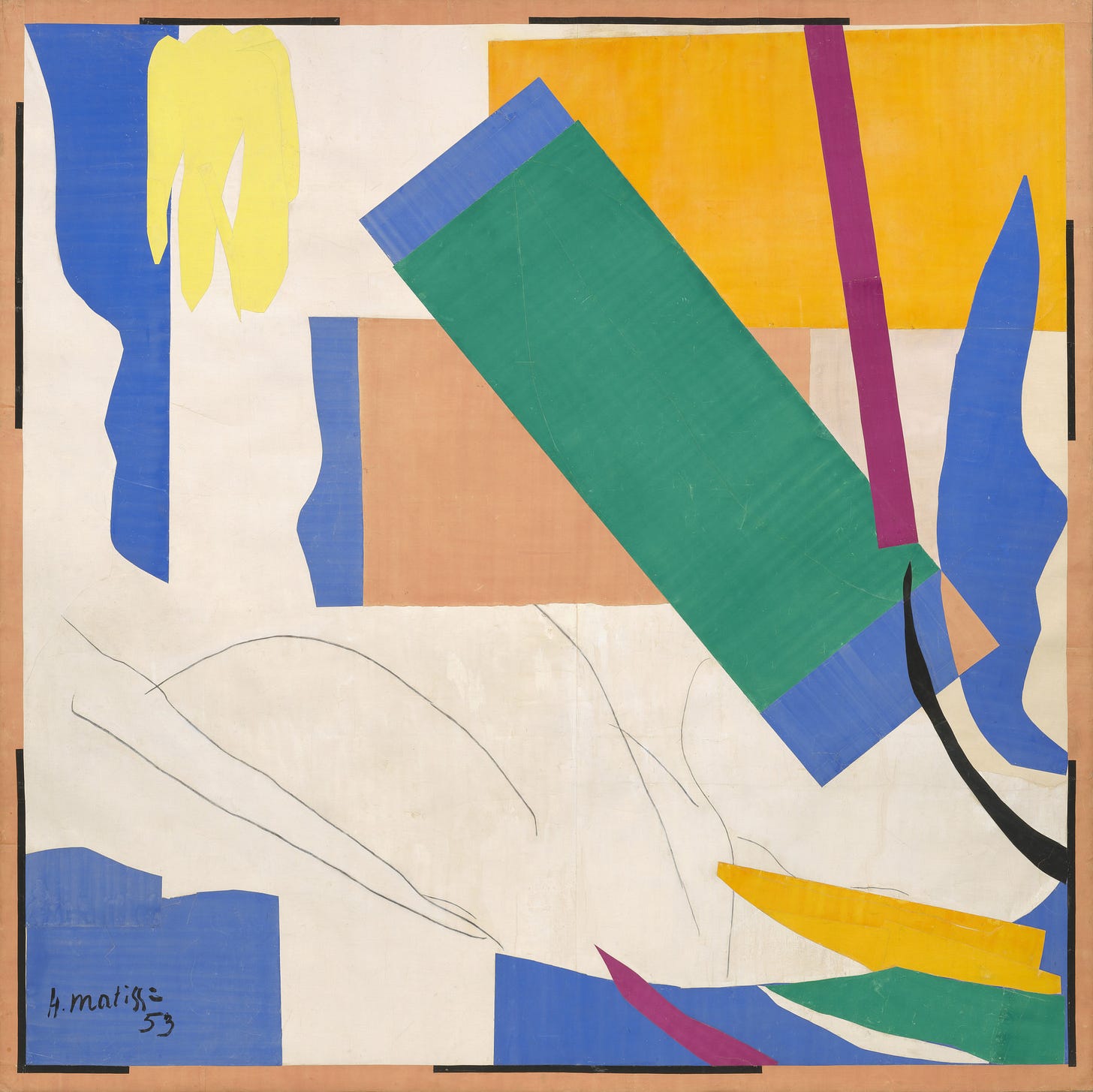The Paradox of Planning
why you shouldn't start from a blank slate
Henri Matisse, Memory of Oceania, 1953.
One of my New Year's resolutions is to plan out my next day every night.
So far, I’ve been doing a pretty good job of sticking to it, although, I have missed a few nights here and there.
What I’ve noticed is that on the days when I do have a plan, I’m much more intentional with how I spend my time. During times where I don’t follow my schedule exactly, there’s usually a good reason for it. I find that have a plan means I’m more aware of what I’m replacing my original plan with, which makes me more mindful about how I use my time overall.
But here’s something unexpected: I’ve found it much harder to plan out my days on the weekend.
This was puzzling to me at first. With no classes and fewer prior commitments, you’d think it would be easier to make a plan. But I’ve actually found the opposite to be true. Without built-in structure—like class times breaking up my day—staring at a completely open schedule feels intimidating. Instead of feeling like I have infinite possibilities, I find that too much flexibility makes it harder to decide how to structure my time.
As counter intuitive as it sounds, it kind of makes sense when I take a step back and think about it.
Constraints creates clarity and creativity, and innovation often comes out of necessity.
In the same way, I’m often most productive when I have a constraint—when I know I only have two hours between classes to run an errand or finish an assignment, I’m much more focused.
This made me rethink the role of constraints. Constraints literally means limitation or restriction by definition, yet it can also be the catalyst to creativity. Constraints forces us to work within boundaries, which often leads to more efficient, intentional, and even innovative ways of getting things done. Maybe instead of resisting structure, we should start embracing it. Maybe it’s time to look at constraints as liberating rather than limiting.
As counter intuitive as this sounds, it might just be true.
Ps. I love Henri Matisse's Memory of Oceania and its creation perfectly encapsulates the creativity resulting from constraints. Mattise was unable to stand and paint due to his declining health, so he adapted by using paper and scissors to create his signature cut-outs, transforming limitation into artistic innovation. This piece, based on his recollections of a trip to Tahiti rather than direct references, shows how memory, an inherently imperfect and constrained tool, shaped his composition in a way that pure realism could not.
Love,
David



thanks